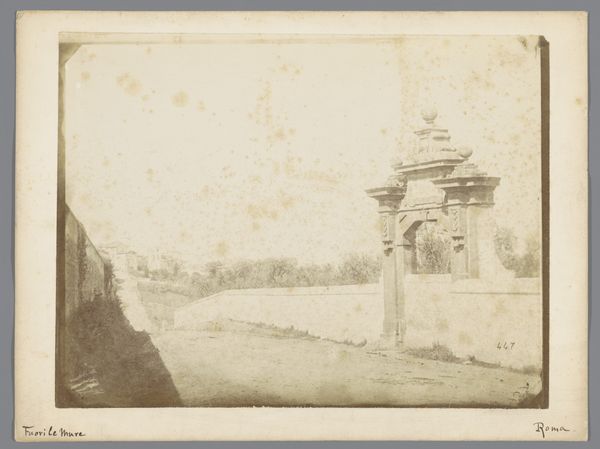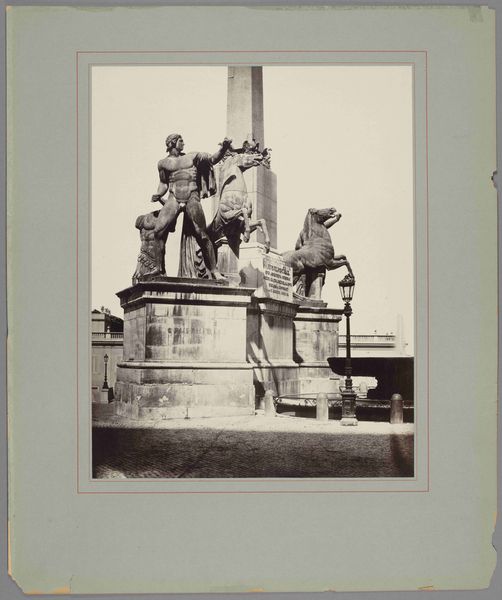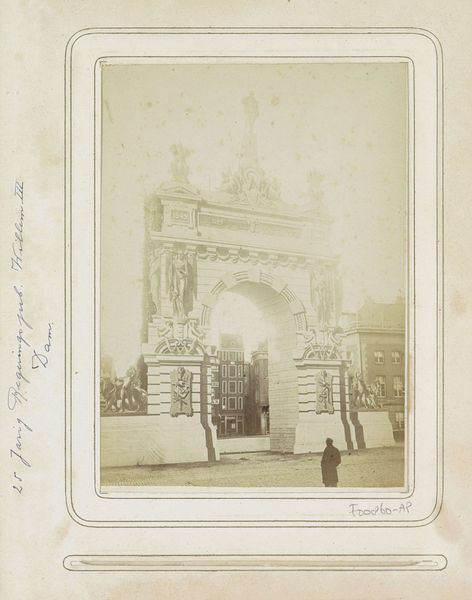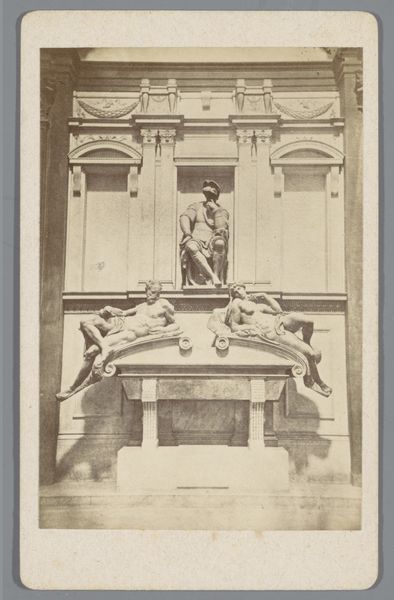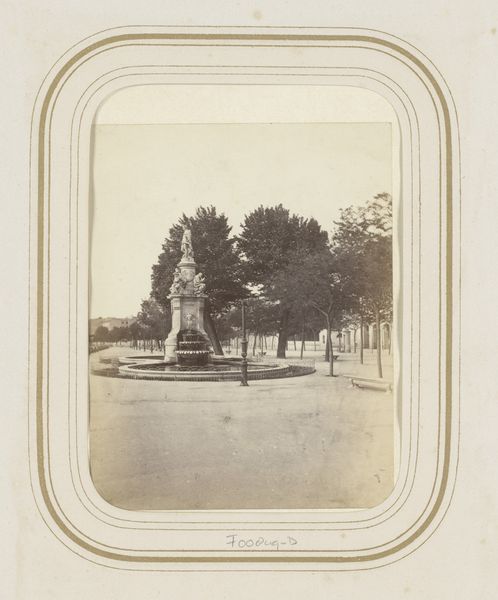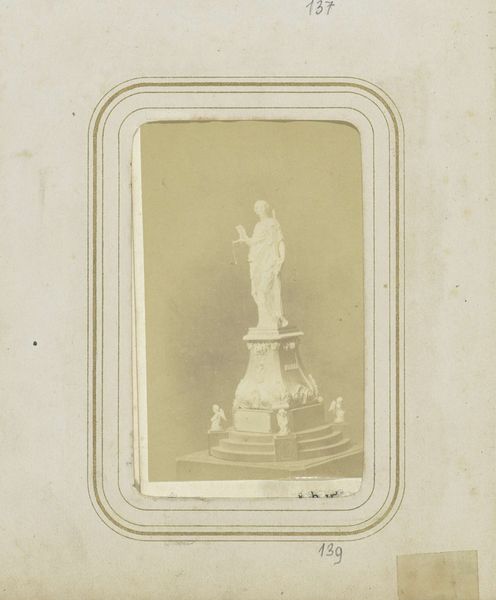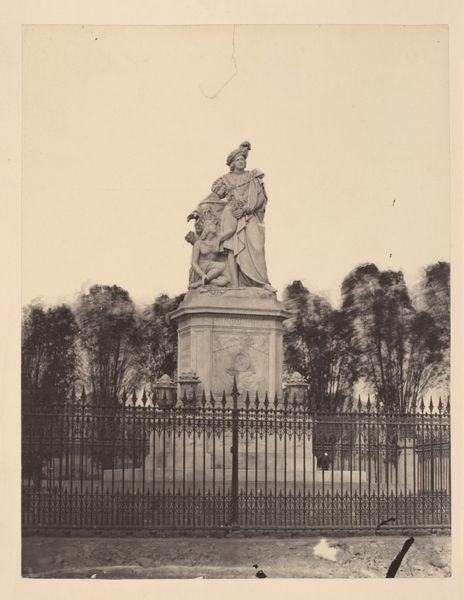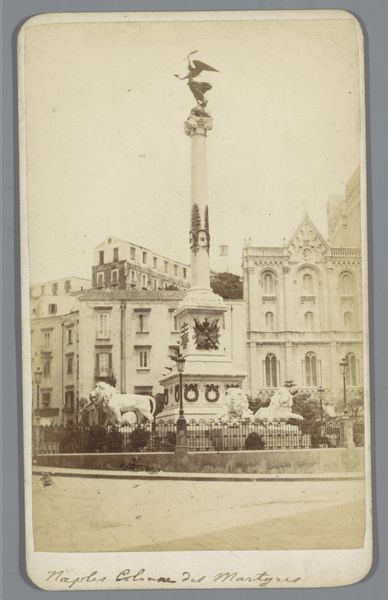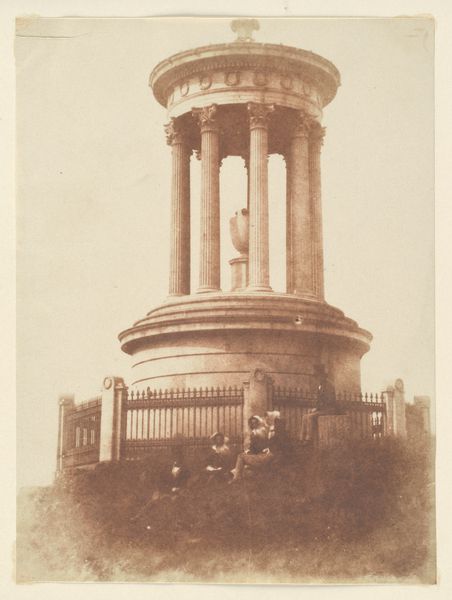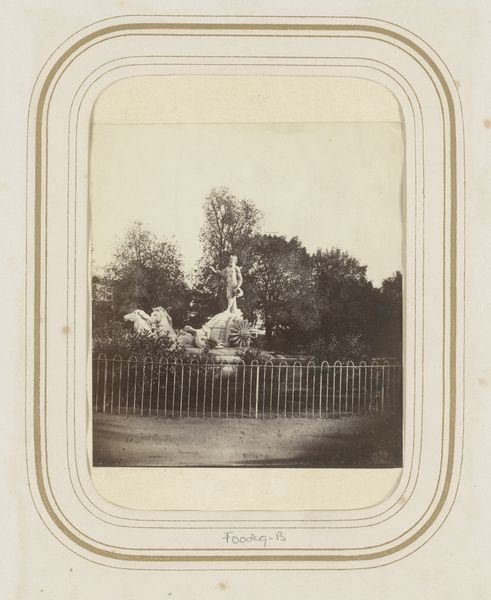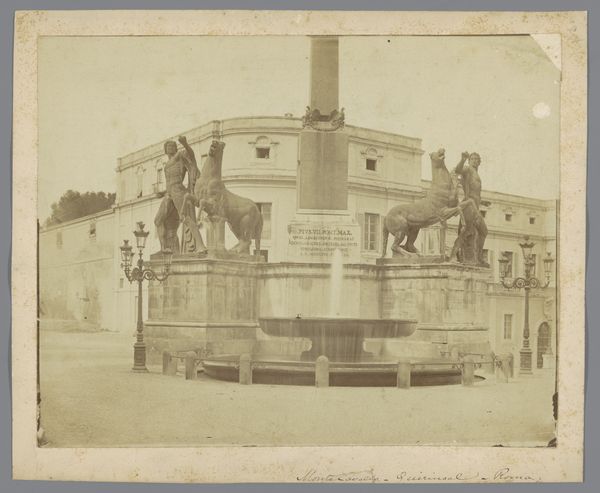
Ruiterstandbeeld van Filips IV op Plaza de Oriente in Madrid 1857 - 1880
0:00
0:00
juanlaurent
Rijksmuseum
Dimensions: height 120 mm, width 88 mm
Copyright: Rijks Museum: Open Domain
Curator: There's a photograph by Juan Laurent, dating from around 1865, depicting the equestrian statue of Philip IV in the Plaza de Oriente in Madrid. Editor: It strikes me as oddly romantic, almost wistful. The sepia tones lend this monumental bronze, this statement of power, a gentle melancholy. Curator: That contrast is precisely what I find fascinating. Laurent was capturing a changing Madrid, and statuary like this, with its deliberate neoclassicism, was often employed to project authority amid shifting social landscapes. Think about it – bronze and stone intended to communicate permanence and timeless reign are now captured in a fleeting photographic moment. Editor: And isn't there an inherent fragility in photography, particularly at this time, despite its claims to objective documentation? Laurent has composed the shot, choosing an angle and perspective. We aren't seeing objective truth here. We see only how this photograph’s context has constructed authority and filtered how we view this figure, a symbol that is simultaneously glorious and a bit… diminished. Curator: Exactly. And considering the Plaza de Oriente was a key site for political demonstrations and royal displays, photography further complicates how these spaces and figures function in the collective memory of the period. Was it truly an attempt to fix Philip IV and neoclassicism within the fabric of the city or simply documentation to show how a space can transform, how people adapt with it through these tumultuous, historical eras? Editor: The fact that it's in a museum now, far from the Plaza, further adds another layer. It is like seeing a ghost from history. Its permanence now lies not in its function but what it stands to symbolize about history: statues crumble, regimes fall, photography preserves, if imperfectly, what was intended to last forever. Curator: Very eloquently said. Laurent’s photograph functions almost like a memento mori, quietly reminding us of the impermanence of earthly power, framed within an echo of a grand artistic moment. Editor: Yes, it asks if memory can live forever in a museum like the people did when it was a monument. It seems the answers can change for everyone!
Comments
No comments
Be the first to comment and join the conversation on the ultimate creative platform.
